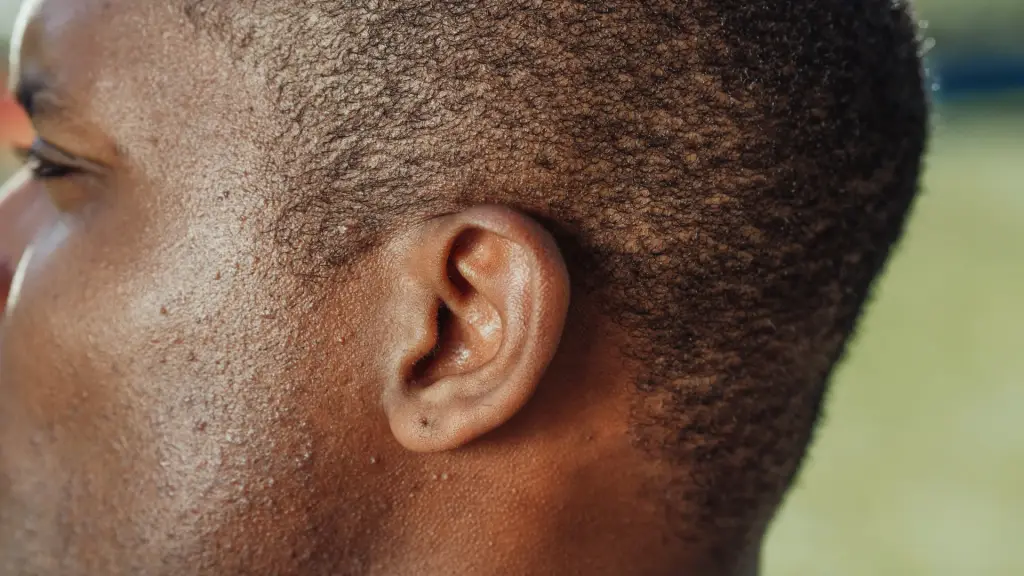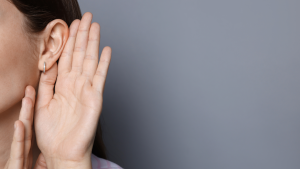Have you ever felt like you’re hearing just fine in one ear, but the other seems muffled or distant? You’re not alone. Many people notice that their hearing isn’t quite the same on both sides, and this imbalance can be confusing, frustrating, and even concerning. Whether it’s missing parts of a conversation or having trouble telling where sounds are coming from, uneven hearing is more common than you might think — and it’s not something to ignore.
Hearing loss that affects one ear more than the other is known as asymmetrical hearing loss, and it can stem from a variety of causes. Sometimes, it’s a temporary issue like earwax buildup or an ear infection. Other times, it could be a sign of something more serious, like sudden sensorineural hearing loss or even an underlying medical condition that needs immediate attention.
This article will walk you through why hearing might be worse in one ear, how to spot the signs, and what steps you should take if you’re experiencing this type of hearing loss. Understanding the root cause is the first step toward effective treatment — and protecting your overall hearing health.
Understanding Normal vs. Asymmetrical Hearing
Our ears work together as a finely tuned system, helping us hear sounds clearly, locate where they’re coming from, and stay balanced in our environment. In an ideal situation, both ears pick up sounds at roughly the same level and clarity, sending equal information to the brain. This balanced input allows us to process sound accurately, especially in complex environments like busy restaurants or crowded gatherings.
When one ear starts hearing differently than the other, it’s referred to as asymmetrical hearing loss. This doesn’t necessarily mean total hearing loss in one ear — it can range from a slight difference in volume or clarity to a dramatic difference where one ear can barely register sound at all. The key factor is that the two ears are no longer functioning equally.
Audiologists use hearing tests to determine the extent and type of hearing loss in each ear. One common tool is an audiogram, which charts your hearing sensitivity at various frequencies. If one ear shows significantly different results compared to the other — generally a difference of 15 decibels or more at multiple frequencies — it’s considered asymmetrical. In more severe cases, a person may have single-sided deafness (SSD), where one ear has profound hearing loss and the other functions normally.
Understanding this imbalance is important because our brains rely on input from both ears to perform tasks like sound localization (telling where a sound is coming from) and speech understanding in noisy environments. When one ear underperforms, your brain has to work harder to compensate, which can lead to fatigue, confusion, and even safety risks in daily life.
Common Causes of One-Sided Hearing Loss
When your hearing is noticeably worse in one ear, it can be unsettling — especially if it happens suddenly or without an obvious cause. Understanding the potential reasons behind asymmetrical hearing loss can help you make informed decisions and seek the right kind of care. Here are some of the most common causes:
Earwax Buildup
It might sound simple, but a significant blockage from impacted earwax can completely muffle sound in one ear. This condition is particularly common in older adults and hearing aid users. Fortunately, it’s usually easy to treat with professional ear cleaning.
Ear Infections
Otitis media (middle ear infection) or otitis externa (outer ear infection, also called swimmer’s ear) can cause temporary hearing loss, often in just one ear. Infections lead to inflammation, fluid buildup, and pressure changes that muffle sound. While children experience these more frequently, adults aren’t immune.
Noise-Induced Hearing Loss
Prolonged exposure to loud sounds — especially if the source is consistently closer to one ear (like shooting firearms or using power tools without ear protection) — can damage the delicate structures in that ear. This can lead to permanent one-sided hearing loss over time.
Sudden Sensorineural Hearing Loss (SSHL)
This is a medical emergency. SSHL can strike one ear suddenly, with no warning, and without pain. It’s typically caused by inner ear damage or issues with the auditory nerve. It may result from a viral infection, blood circulation problems, or autoimmune disorders. If treated within 72 hours, steroids can sometimes restore hearing.
Ménière’s Disease
A chronic inner ear condition, Ménière’s disease often causes fluctuating hearing loss in one ear, along with vertigo, tinnitus (ringing), and a feeling of fullness. Though the exact cause is unknown, it’s thought to involve abnormal fluid buildup in the inner ear.
Acoustic Neuroma (Vestibular Schwannoma)
This rare but serious condition involves a benign tumor growing on the auditory nerve. Symptoms often develop gradually and may include hearing loss in one ear, imbalance, and tinnitus. Acoustic neuromas require medical imaging (like an MRI) for diagnosis.
Head Trauma or Physical Damage
An injury that impacts one side of the head may damage the structures of the ear or auditory nerve on that side. This can result in partial or total hearing loss in one ear.
Aging (Presbycusis)
While age-related hearing loss usually affects both ears, it’s not uncommon for one ear to deteriorate faster than the other. This can result in noticeable differences in hearing ability.
When One Ear Hears Better Than the Other: Symptoms to Watch For
Noticing that your hearing feels uneven can be subtle at first — perhaps you’re always turning the same side of your head toward conversations, or you struggle to follow dialogue in noisy places. But these small signs can point to larger issues with asymmetrical hearing loss. Being aware of the symptoms can help you recognize when it’s time to seek professional help.
Trouble Locating Sounds
One of the most common signs is difficulty telling where a sound is coming from. Our brains use information from both ears to determine direction and distance. When one ear isn’t working as well, you may find yourself turning the wrong way when someone calls your name or feeling disoriented in busy environments.
Misunderstanding Speech
If you find yourself asking people to repeat themselves — especially when they’re on one side of you — it could be because that ear isn’t picking up speech clearly. This can be especially challenging in group conversations or settings with background noise, where sound localization is key to following who’s talking.
Turning Your Head to Hear Better
You might unconsciously start adjusting your position so your “good ear” faces the speaker. This behavior is common and often goes unnoticed by the person experiencing it, but it can be a telltale sign of one-sided hearing loss.
Ringing or Tinnitus in One Ear
Tinnitus — a ringing, buzzing, or hissing sound in the ear — often accompanies hearing loss. If you experience it in only one ear, it may indicate damage or nerve-related issues on that side.
Balance or Dizziness Problems
Because the inner ear also plays a role in balance, asymmetrical hearing loss can sometimes come with vertigo or a feeling of being off-kilter, especially if the issue stems from inner ear dysfunction or Ménière’s disease.
Feeling Mentally Fatigued or Distracted
Compensating for uneven hearing can make listening feel exhausting. Your brain is working harder to process incomplete or imbalanced audio input, which may lead to headaches, fatigue, or difficulty concentrating.
Others Noticing Before You Do
Sometimes, friends, family, or coworkers notice you’re not hearing as well from one side before you realize it. They may comment on how you favor one ear during phone calls or miss parts of conversations.
If you experience any of these symptoms — especially if they develop suddenly — it’s important to get your hearing evaluated promptly. Sudden asymmetrical hearing loss can indicate serious conditions that require immediate treatment to prevent permanent damage.
Diagnosis: How Audiologists Identify Uneven Hearing
If you suspect your hearing is worse in one ear, the best step you can take is to schedule a comprehensive hearing evaluation with a licensed audiologist. While some causes of one-sided hearing loss are minor and temporary, others require urgent medical attention — and only a proper diagnosis can tell the difference.
What to Expect During a Hearing Evaluation
The diagnostic process begins with a thorough discussion of your medical history and hearing symptoms. The audiologist will ask questions such as:
- When did you first notice the hearing difference?
- Is the issue constant or intermittent?
- Have you experienced ringing, dizziness, or ear pain?
- Have you had recent illnesses, infections, or head injuries?
These details help guide the testing process and narrow down possible causes.
Pure-Tone Audiometry
This is the most common hearing test. You’ll wear headphones and listen to a series of tones at different frequencies and volumes. You’ll respond each time you hear a sound, allowing the audiologist to map out your hearing thresholds for each ear. The results are plotted on an audiogram, which visually represents your hearing ability and highlights any asymmetry.
Speech Testing
You may also be asked to repeat words or sentences at various volumes. This evaluates how well you understand speech, especially in noisy environments. Discrepancies between your ears in speech understanding can indicate asymmetrical hearing loss.
Tympanometry and Acoustic Reflex Testing
These tests assess the function of the middle ear and the movement of the eardrum. They can help identify issues like fluid buildup, eustachian tube dysfunction, or perforated eardrums — all of which may contribute to uneven hearing.
Otoacoustic Emissions (OAE)
This test measures the response of the tiny hair cells in the inner ear to sound. If your ear does not produce OAEs, it may indicate damage to the cochlea — and if only one ear is affected, it suggests asymmetrical inner ear dysfunction.
Auditory Brainstem Response (ABR)
In cases where the audiologist suspects a more serious condition, like a tumor on the auditory nerve (acoustic neuroma), you may undergo an ABR test. This measures how sound travels from the ear to the brain and can detect abnormalities in the auditory pathway.
Imaging Tests (If Needed)
If a red flag is raised — such as severe unilateral hearing loss, sudden loss without an obvious cause, or asymmetric tinnitus — your audiologist may refer you for MRI or CT imaging. These scans help rule out structural issues, including tumors or inner ear malformations.
The goal of this diagnostic process is not just to confirm that one ear hears worse than the other, but to determine why — so that treatment can be targeted, effective, and safe.
Treatment Options for Asymmetrical Hearing Loss
Once a diagnosis is made, the next step is developing a personalized treatment plan. The right approach to asymmetrical hearing loss depends entirely on the underlying cause, the severity of the hearing difference, and how much it impacts your daily life. Fortunately, there are several treatment options available — ranging from simple solutions to more advanced interventions.
Earwax Removal and Infection Treatment
If your hearing loss is caused by something temporary like impacted earwax or an ear infection, treatment may be quick and straightforward. A healthcare provider can safely remove wax, and antibiotics or antifungal medications can clear up infections. Hearing typically returns to normal once the issue is resolved.
Steroid Therapy for Sudden Hearing Loss
For sudden sensorineural hearing loss (SSHL), prompt treatment with corticosteroids is critical — often within the first 72 hours. Steroids reduce inflammation and may help restore hearing if administered quickly. Sometimes they are given orally, and in other cases, they are injected directly into the middle ear.
Hearing Aids
When hearing loss in one ear is more permanent or age-related, a hearing aid can be an excellent solution. Audiologists can program the device to amplify sound specifically in the weaker ear. In cases where both ears are affected but unevenly, binaural hearing aids can be adjusted individually to create balance and improve sound localization.
CROS and BiCROS Hearing Systems
For people with single-sided deafness (SSD) — where one ear has no usable hearing — specialized systems called CROS (Contralateral Routing of Signal) hearing aids may be used. These devices pick up sound from the non-hearing ear and transmit it to the better ear. If the “better” ear also has hearing loss, a BiCROS system can both transmit and amplify sound accordingly.
Cochlear Implants
In cases of severe or profound hearing loss in one ear that cannot be helped by hearing aids, a cochlear implant may be considered. This surgically implanted device bypasses damaged parts of the inner ear and directly stimulates the auditory nerve, restoring access to sound.
Medical or Surgical Intervention
If your hearing loss is due to an acoustic neuroma, Ménière’s disease, or structural abnormalities, treatment may involve medical management or surgery. This might include tumor removal, balance medications, or surgical procedures to relieve pressure in the inner ear.
Counseling and Aural Rehabilitation
Sometimes, the most helpful form of treatment is not just a device, but education and support. Audiologists and hearing therapists can provide counseling, communication strategies, and auditory training to help you adapt to uneven hearing and improve your quality of life.
The key takeaway is that early intervention matters. The sooner asymmetrical hearing loss is identified and addressed, the better your chances of protecting your remaining hearing, improving communication, and avoiding complications like social withdrawal or mental fatigue.
Living With Uneven Hearing: Tips for Everyday Life
Dealing with hearing loss in one ear can pose daily challenges, but with the right strategies and support, it’s entirely possible to maintain a full, active lifestyle. Whether your hearing difference is temporary or permanent, these practical tips can help you adapt and stay connected.
Be Strategic About Seating
In conversations or group settings, position your better-hearing ear toward the speaker. Whether you’re in a restaurant, at a family gathering, or attending a meeting, choosing your seat wisely can dramatically improve your ability to follow the conversation.
Use Assistive Listening Devices
In addition to hearing aids or CROS systems, there are a range of assistive listening devices (ALDs) that can help. These include amplified phones, personal sound amplifiers, TV listening systems, and even apps that enhance speech clarity or provide real-time captions.
Practice Active Listening and Communication
Tell people about your hearing preferences so they can help you hear better. Don’t be afraid to say, “Could you move to my left side?” or “I hear better on this side.” Good communication is a two-way street, and most people are happy to accommodate if they understand your needs.
Minimize Background Noise
One-sided hearing loss makes it harder to filter out background sounds. Reduce noise distractions by turning off the TV, closing windows, or choosing quieter venues when possible. Noise-canceling technology — in hearing aids or headphones — can also be helpful in certain situations.
Make Use of Visual Cues
When hearing is uneven, reading lips, watching facial expressions, and observing body language becomes even more important. Position yourself where you can clearly see the person speaking, and make sure rooms are well-lit to enhance visual cues.
Drive Defensively
If you drive, one-sided hearing loss can affect your ability to detect approaching sirens, honking horns, or other important auditory signals. Always stay alert, use mirrors frequently, and consider keeping windows slightly cracked for better sound awareness when safe to do so.
Prioritize Mental Health and Social Connection
Asymmetrical hearing loss can sometimes lead to feelings of frustration, isolation, or embarrassment. Stay engaged with your community, seek support from friends or professionals, and consider joining a hearing loss support group — either locally or online. You’re not alone, and sharing your experience with others can be both empowering and comforting.
Keep Monitoring Your Hearing
Even if one ear seems unaffected, it’s important to have both ears checked regularly. Hearing loss can change over time, and early detection of any new changes gives you more options for effective treatment.
Adapting to uneven hearing may take time, but with awareness, communication tools, and professional guidance, you can stay confident and connected in your daily life.
Conclusion
Noticing that your hearing is worse in one ear than the other can be unsettling, but it’s also a vital cue to pay attention to your auditory health. Asymmetrical hearing loss is more common than many realize, and while it can stem from something simple like earwax buildup, it can also signal more serious underlying issues that require prompt attention.
The good news is that today’s hearing care solutions are more advanced and personalized than ever before. From precise diagnostics to tailored treatment plans — including hearing aids, assistive technology, medical interventions, and communication strategies — there’s a path forward for nearly every type of uneven hearing.
If you’ve been tilting your head to hear better, missing parts of conversations, or struggling to locate where sounds are coming from, it’s time to take the next step. Reach out to an audiologist or hearing care provider for a thorough evaluation. The sooner you understand what’s going on, the sooner you can regain clarity, confidence, and connection in your daily life.
Your ears may not be perfectly balanced — but with the right support, your life can be.
FAQ
What does it mean if I hear better in one ear than the other?
Hearing better in one ear typically means there is a difference in how sound is processed between the two ears — a condition known as asymmetrical hearing loss. It could be caused by something minor like earwax or something more serious like nerve damage. A hearing test is the best way to determine the cause.
Is it normal to have slight differences in hearing between ears?
Yes, small variations in hearing between ears are fairly common and not always cause for concern. However, if the difference is noticeable or affecting your daily life, it’s important to have it evaluated to rule out more serious conditions.
Can one-sided hearing loss be reversed?
It depends on the cause. Hearing loss from earwax, infections, or certain sudden hearing loss events may be reversible if treated promptly. However, sensorineural hearing loss, which involves damage to the inner ear or nerve pathways, is usually permanent but manageable with hearing aids or implants.
Should I be worried about hearing loss in one ear only?
Yes — especially if the hearing loss occurs suddenly, is accompanied by tinnitus or dizziness, or gets progressively worse. One-sided hearing loss can sometimes indicate a serious condition like an acoustic neuroma, so it’s important to seek medical attention promptly.
What should I do if I notice hearing loss in one ear?
Don’t ignore it. Schedule an appointment with an audiologist or ENT (ear, nose, and throat) specialist. They will conduct hearing tests and possibly imaging to diagnose the issue and recommend appropriate treatment.






